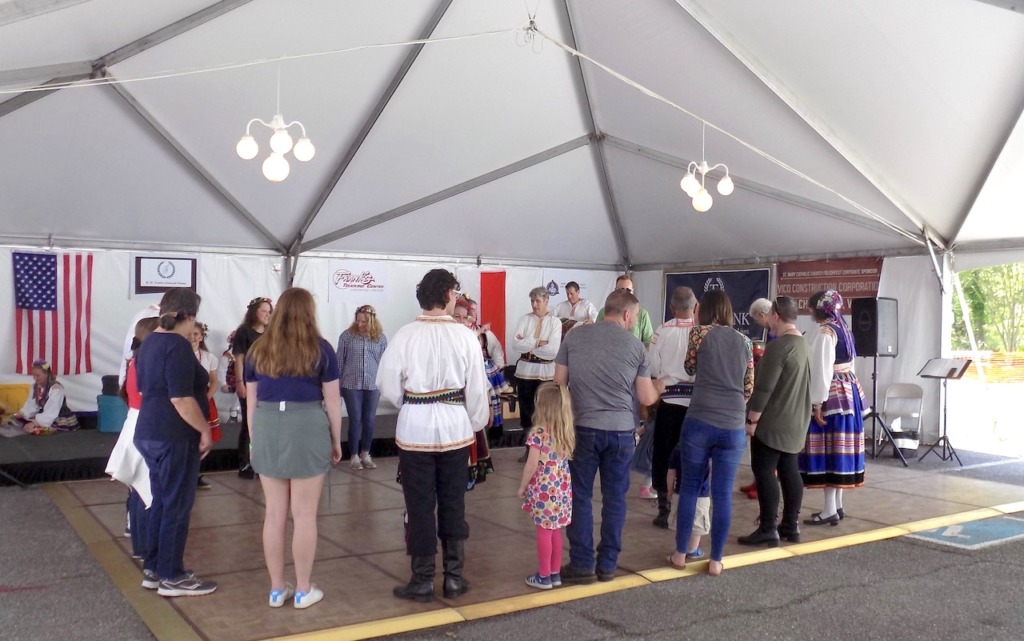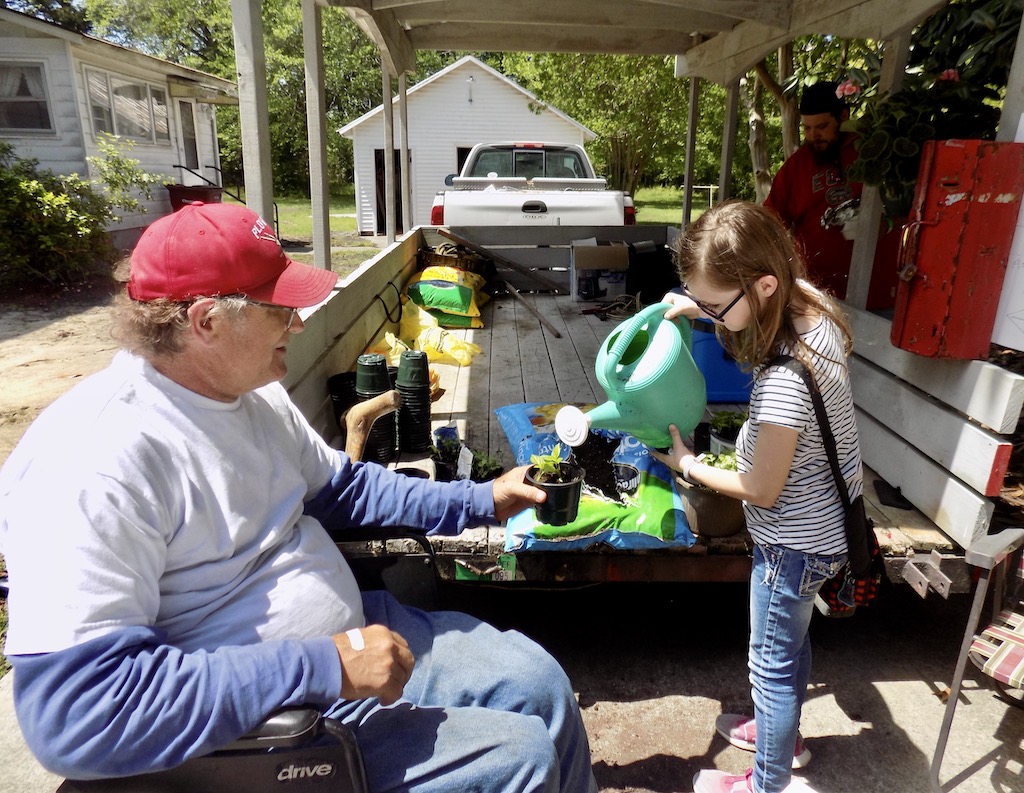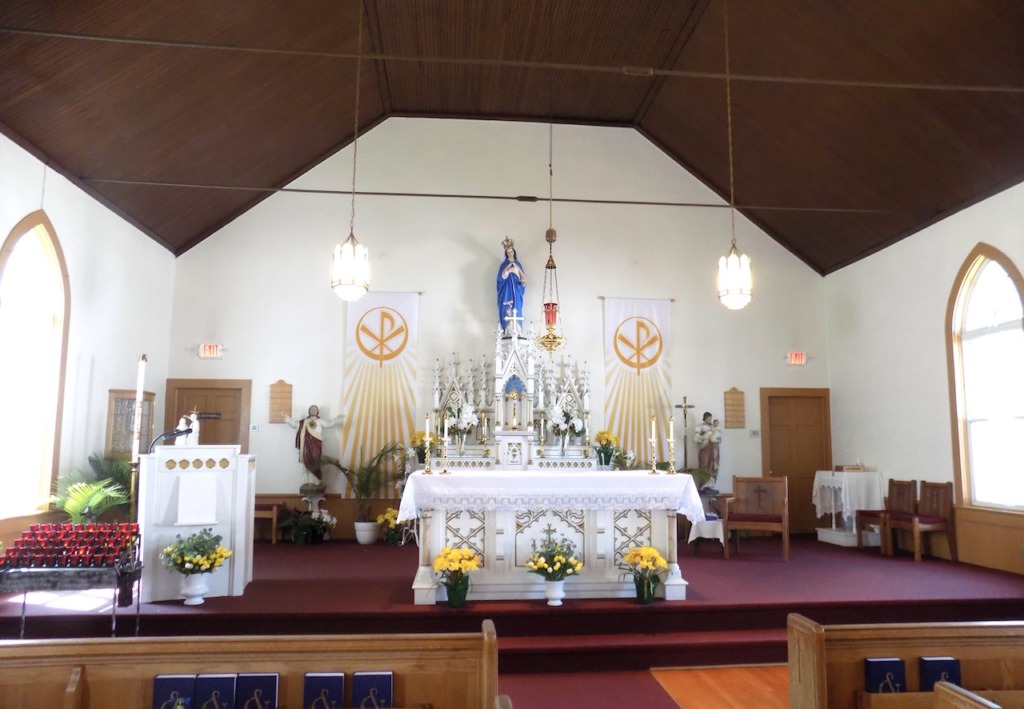Polish Catholic community preserves legacy of faith and tradition
It’s a labor of love. And thousands of homemade cabbage rolls.
St. Mary, Chesapeake, held its annual Polish Festival on Saturday, April 29, celebrating more than 100 years of faith with traditional food, music and dancing, church tours, and a children’s fair.
“It’s a very unique community,” Bruce McDaniel, co-chair of the festival, said. “We are the only Polish agri- cultural neighborhood in Virginia.”

(Photo/Wendy Klesch)
Hidden amongst the honeysuckle in an area known as Sunray, St. Mary is a little piece of Poland under a Tidewater sun. Its spring fest, which serves as a fundraiser for the parish, typically draws between 1,000 to 2,000 visitors.
“Everyone loves the food,” McDaniel said. “We really work hard to make sure everything is authentic.”
More than 80 volunteers, both from St. Mary and from its cluster parishes in Portsmouth of St. Paul, Church of the Holy Angels, and Church of the Resurrection pitch in to make the festival happen.
“We try to get as many people as possible involved,” Allison Stewart, festival co-chair, said. “It’s quite the endeavor. But it’s a fun day for all.”
A legacy of faith
The story of St. Mary is one of a faith that endures in the face of hardship. In 1907, the Franklin Land and Lumber Company, having cleared a large section of land for timber, decided to sell the parcel for farming. The company took out ads in several Polish-language newspapers based in coal towns and the industrial northeast, offering ten-acre plots for sale.
“They were promised good, quality land, but what they found was land that had been timbered – full of cypress stumps and yellow flies and mosquitos, right at the edge of the Great Dismal Swamp,” third-generation parishioner Gary Szymanski said.
The immigrants labored to make a home in Virginia, clearing the stumps and digging ditches to drain the marshy land.
“They needed everyone. The families really had to pull together,” Szymanski said.
The first families to settle in Sunray met each Sunday in the home of Jan Zawada to sing hymns, say prayers, and recite the rosary.
With the arrival of Father Andrej Wilczek in 1914, the community began to raise money to build a church, putting down roots in a land much different than the one they had left. St. Mary celebrated its first Mass on February 16, 1916.
“It was the center of the Polish community,” Szymanski said, not only for Sunray, but for all of south Hampton Roads.

Szymanski has written two books on the history of the area, recording stories such as that of John and Helen Cichorz, the first couple to marry in the church, in October 1916.
The couple’s granddaughter, Janet Cichorz, came from Greenville, North Carolina, to attend the festival.
“These streets, all through here – this is where my best childhood memories were formed,” she said. “So much of life revolved around St. Mary. Anytime the church doors were open, we were there.”
Pulling together
“Part of what makes the festival so special is the dedication of the volunteers,” Stewart said.
Joe Noha, a parishioner of Church of the Holy Angels, volunteered Saturday by manning a grill to make potato pancakes.
“We all decided to come out and support St. Mary,” he said. “All of the parishes in the cluster do what they can for one another. They’d do the same for us.”
Some of the most labor-intensive work revolves around preparing the food. The pierogi are delivered from Pennsylvania and the Polish beer through an import company, McDaniel explained, and much of the rest – including the fresh baked goods – are homemade.
His wife, Mary McDaniel, whose grandmother attended St. Mary, led a team of 15 volunteers in making 2,000 cabbage rolls for the festival, following the recipe of a parishioner who has since passed away.
The team faced an extra hurdle this year, she said, when the parish kitchen was closed for plumbing repairs.
“The Church of the Resurrection offered us the use of their kitchen so we could work there,” she said. “I like to think we’re the little engine that could.”
“We are smallest church in the cluster, but we have the largest fundraiser,” Bruce McDaniel said. “And we do it with the help of everybody.”
A fair for kids, by kids
While the main tent featured an area for music and dancing, as well as long tables at which to enjoy kielbasa and rye bread, a smaller tent pitched at the side of the church offered a children’s fair, run by the cluster parishes’ youth group. There were bubbles, face-painting, carnival games and prizes.

“We built some of the games and put up the tables, to set it all up,” Arturo Munoz, 14, a parishioner of St. Mary, said. “It’s been pretty busy.”
“The kids have fun, and the parents enjoy it, too,” Madre Collins, recently-retired youth minister for the cluster parishes, said. The quieter area affords parents a chance to sit in the shade of the surrounding magnolias as the children play.
Proceeds from the children’s fair go to the youth group, which plans to use the funds to attend the Diocesan Youth Conference in Richmond next year.
“They have a great time here, working with the kids, and then the money they raise helps them to have that experience,” she said.
A faith that grows
The festival was also a day to celebrate the parish’s agricultural roots.
Parishioner Raquel Munoz said she was drawn to begin volunteering at the festival eight years ago, because of the chance to help run the annual plant sale.
“I love working with the flowers,” she said. “We always get the best plants. It’s just nice to see everyone out.”
Syzmanski operated a cart nearby where children and teens could pot a free plant – choosing from zinnias, peppers or cilantro – to take home with them to grow.
“It’s nice for them to have that simple experience, of nurturing something,” he said.
“Things are always changing, especially here in Hampton Roads,” Szymanski said, “but this little community has kept its flavor, against all odds.”

